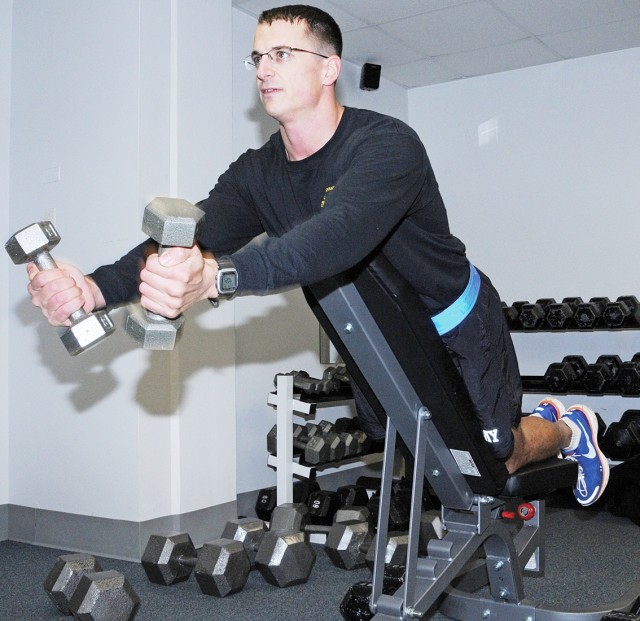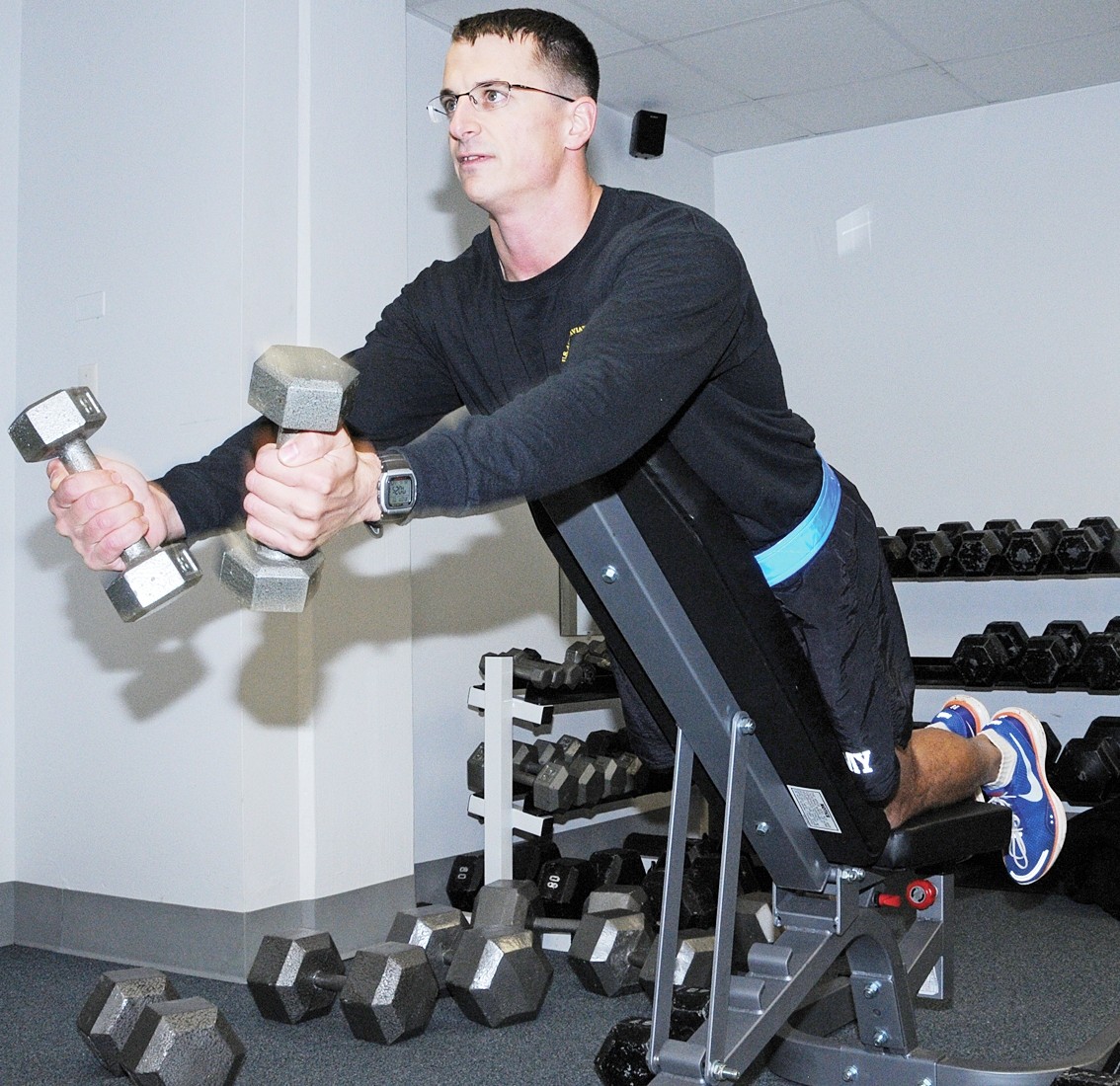(Editor's note: This is the final in a three-part series about nutrition and fitness.)
FORT RUCKER, Ala. -- Army Physical Fitness Tests are part of every Soldier's job, and peak performance aids in personal and professional success. Other avid athletes participate in triathlons and races held on post and around the country.
Achieving great fitness results requires training and commitment, according to post fitness experts.
To be best prepared for APFTs and other competitions, create a training plan before any major test or event, said Caroline Driscoll, Directorate of Family and Morale, Welfare and Recreation fitness program coordinator. She recommends people seek professional guidance for training routines for everything from 5-kilometer races to full marathons. Starting early and staying on track is also important.
"Make small goals and gradually build up," she said.
Getting oneself in peak physical condition does not have to be difficult and time consuming. In addition to regular workouts and training sessions, Sgt. 1st Class (P) Jeffrey Herzog, Noncommissioned Officer Academy instructor and certified personal trainer, recommends simple exercises people can perform at home.
He suggests individuals - especially those preparing for APFTs - make it a habit to conduct push-ups and sit-ups first thing in the morning and right before bedtime. People should not push themselves to muscle failure, he said, but instead only work out until they need a break. Over time, this increases the number of repetitions a person can complete and improves test scores, Herzog added.
People seeking to improve their runs should start by running for time, instead of specific distances. During their timed practice runs however, runners must still at least cover the mileage they will be tested on or are racing, Herzog said.
He also advocates for interval training, alternating between jogging and sprinting for short distances over 2 miles or more. Running hills and stairs also builds cardiovascular strength. Even walking long distances can be beneficial training, he said.
By varying routines and pushing themselves, athletes should see their cardiovascular endurance increase and run times decrease, said Herzog.
The amount of time required to reach achievements varies by a person's age and current fitness level, said Jo-Ann Van Aswegen, a Fortenberry-Colton Physical Fitness Facility fitness specialist.
"Work on endurance," she said. "You're not going to improve by just arriving on the day of the race and trying to perform."
On average, individuals should aim for 20-30 minutes of cardio activity daily and strength training two or three days per week, Van Aswegen said. Stretching daily is also important to maintaining flexibility. Alternative workouts to accomplish this include yoga and pilates.
Individuals who work indoors or have busy schedules need not give up on fitness goals. She said several short exercise bursts throughout the day are also effective. People can perform simple maneuvers such as getting up from their desks several times hourly and doing squats. Walking outdoors over lunch is also an excellent workout, Van Aswegen said.
Safety throughout any workout is also critical, Herzog said. Falling victim to injuries only slows athletes down.
People performing for more than one hour must carry water and energy bars or gel packs to nourish themselves for the duration of their events, Herzog noted. Those running shorter distances should be fine as long as they are adequately nourished and hydrated before exercising.
"Listen to your body. Don't be afraid to push your limitations, but don't go beyond your limitations," Herzog said.
No matter what, those looking to improve their fitness must make efforts to eat nutritious meals, drink lots of water and dedicate themselves to their goals, Van Aswegen said.
In the end, training is all about setting goals and finding each individual's best way to reach them. Above all, training must be fun, Herzog said, otherwise attempts are futile.


Social Sharing